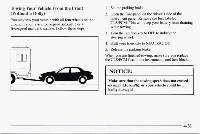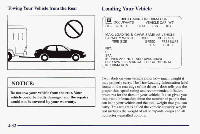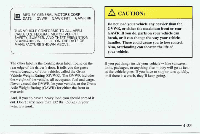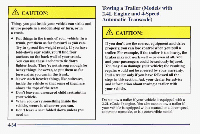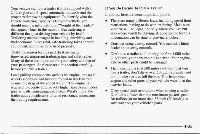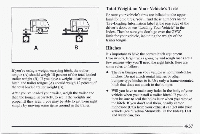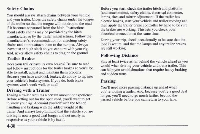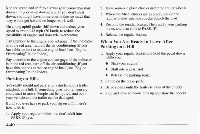1998 Pontiac Sunfire Owner's Manual - Page 203
1998 Pontiac Sunfire Manual
Page 203 highlights
Your vehicle can towa trailer if it is equipped with a 2.4L engine and 4-speed automatic transaxle and the proper trailer towing equipment. To identify what the vehicle trailering capacity is foryour vehicle, you should read the information in "Weight of the Trailer" that appears later in this section. But trailering is different than just driving your vehicle by itself. Trailering means changes in handling, durability and fuel economy. Successful, safe trailering takes correct equipment, and it has to be used properly. That's the reason for this part. In itare many time-tested, important trailering tips and safety rules. Many of these are important for your safety and that of your passengers. So please read this section carefully before you pull a trailer. Load-pulling components such as the engine, transaxle, wheel assemblies and tires are forced to work harder against the drag of the added weight. The engine is required to operate at relatively higher speeds and under greater loads, generating extra heat. What's more,the trailer adds considerably to wind resistance, increasing the pulling requirements. If You DoDecide To Pull A Trailer If you do, here are some important points: 0 There are many different laws, including speed limit restrictions, having to do with trailering. Make sure your rig will be legal, not only where you live but also where you'll be driving. A good source for this information can be state or provincial police. Consider using a sway control. You can ask a hitch dealer about sway controls. Don't tow a trailer at all during the first 1,000 miles (1 600 k ) m your new vehicle is driven. Your engine, axle or other parts could be damaged. 0 0 0 m that Then, during the first 500 miles (800 k ) you tow a trailer, don't drive over 50 mph (80 lun/h) and don't make starts at full throttle. This helps your engine and other parts of your vehicle wear in at the heavier loads. Don't drive faster than the maximum posted speed for trailers (or no more than 55 mph (90 k / )to mh) save wear on your vehicle's parts. a Obey speed limit restrictions when towing a trailer. 4-35





